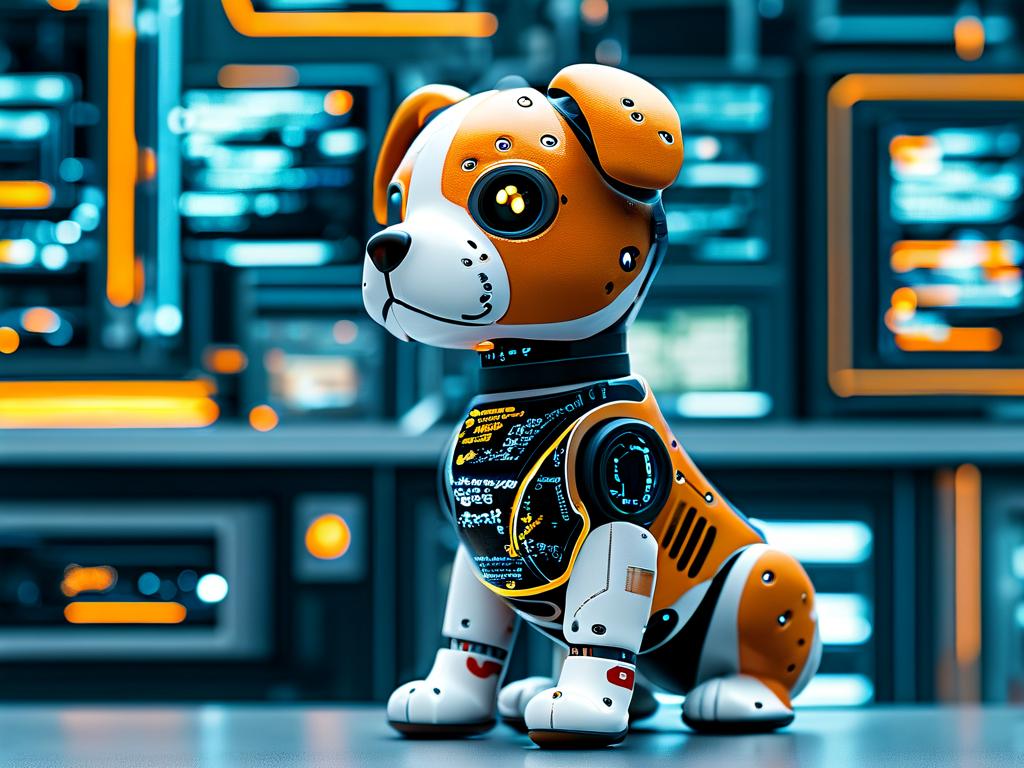The fusion of robotics and embedded systems has ushered in a new era of intelligent devices, with robotic dogs standing at the forefront of this technological revolution. These quadrupedal machines combine advanced sensors, real-time processing, and adaptive algorithms to mimic biological movement while solving practical challenges. For developers, creating a functional robotic canine requires deep integration of hardware and software components within constrained resource environments.

Hardware Architecture
At the core of every robotic dog lies a microcontroller unit (MCU) or system-on-chip (SoC) that orchestrates operations. Popular choices include ARM Cortex-M7 processors for mid-range models and Raspberry Pi CM4 modules for research-oriented builds. Motor control demands precision – 12-16 servo motors typically manage joint movements, requiring pulse-width modulation (PWM) controllers like PCA9685 for coordinated limb synchronization.
Environmental interaction is enabled through multimodal sensors:
- LiDAR (RPLIDAR A1) for spatial mapping
- IMU (MPU-6050) for balance maintenance
- Infrared arrays for obstacle detection
- MEMS microphones for sound localization
A power management IC (PMIC) such as the BQ25703 becomes critical for managing lithium polymer battery packs, ensuring stable 5V/12V outputs while monitoring charge cycles.
Firmware Development
Real-time operating systems (RTOS) form the software backbone. FreeRTOS remains popular for its lightweight footprint and deterministic task scheduling. Developers typically structure firmware into three primary threads:
- Motion control loop (highest priority)
- Sensor data processing
- Communication interface
Here's a simplified PWM configuration snippet for servo control:
void configure_servo(uint8_t channel) {
PWM_TIMER->CCR[channel] = 1500; // 1.5ms neutral position
PWM_TIMER->CCMR1 |= TIM_CCMR1_OC1M_1 | TIM_CCMR1_OC1M_2; // PWM mode 1
HAL_TIM_PWM_Start(&htim3, channel);
}
Gait Implementation
Creating stable locomotion patterns involves inverse kinematics calculations. The Denavit-Hartenberg parameters help model limb segments, while Bézier curves smooth transitional movements. A basic trot gait might alternate diagonal leg pairs with 50% duty cycle:
def calculate_trot_phase(t):
cycle_time = 1.0 # Seconds per gait cycle
phase = t % cycle_time
if phase < 0.5:
return (front_left, back_right)
else:
return (front_right, back_left)
Wireless Communication
Most commercial robotic dogs implement hybrid connectivity:
- Bluetooth Low Energy (nRF52840) for short-range control
- Wi-Fi (ESP32-C6) for video streaming
- Custom 915MHz RF links for emergency stop signals
Protocol buffers (protobuf) efficiently package telemetry data:
message DogTelemetry {
required float battery_voltage = 1;
repeated float joint_angles = 2 [packed=true];
optional bytes lidar_scan = 3;
}
Challenges in Embedded Deployment
Memory constraints force aggressive optimization – often requiring fixed-point arithmetic instead of floating-point operations. Thermal management proves critical when operating motors continuously, necessitating temperature sensors (DS18B20) near driver ICs. Safety protocols must include hardware watchdogs (MAX6374) to reset the system during freezes.
Practical Applications
Modern robotic dogs serve diverse roles:
- Industrial inspection in hazardous environments
- Elderly assistance through object retrieval
- Urban search-and-rescue operations
- Interactive STEM education tools
The open-source community has made significant contributions through projects like SpotMicro and Stanford Pupper, providing accessible entry points for new developers. These platforms demonstrate how $200-500 budget builds can achieve basic autonomous functions through careful component selection.
As edge computing capabilities grow, future iterations will likely incorporate on-device machine learning using tensor processing units (TPUs). This evolution promises more adaptive behaviors without relying on cloud connectivity – a crucial development for field operations. From prototype to production, embedded development for robotic canines continues pushing the boundaries of autonomous systems engineering.









